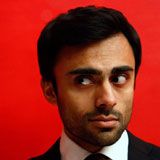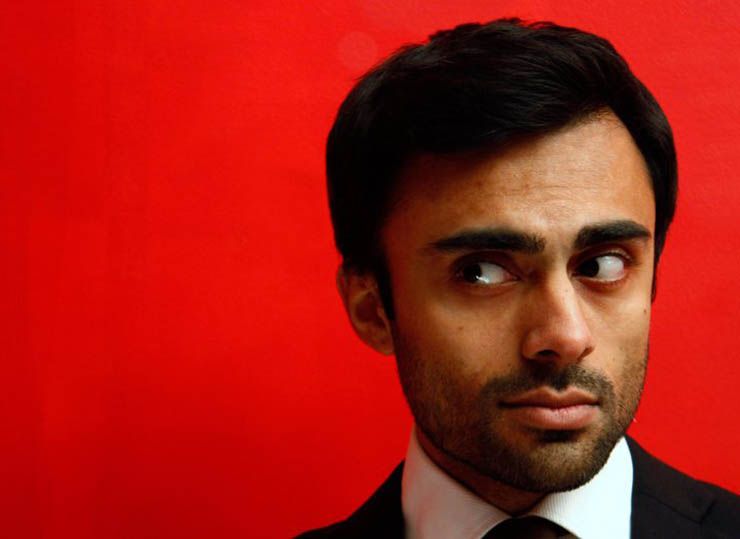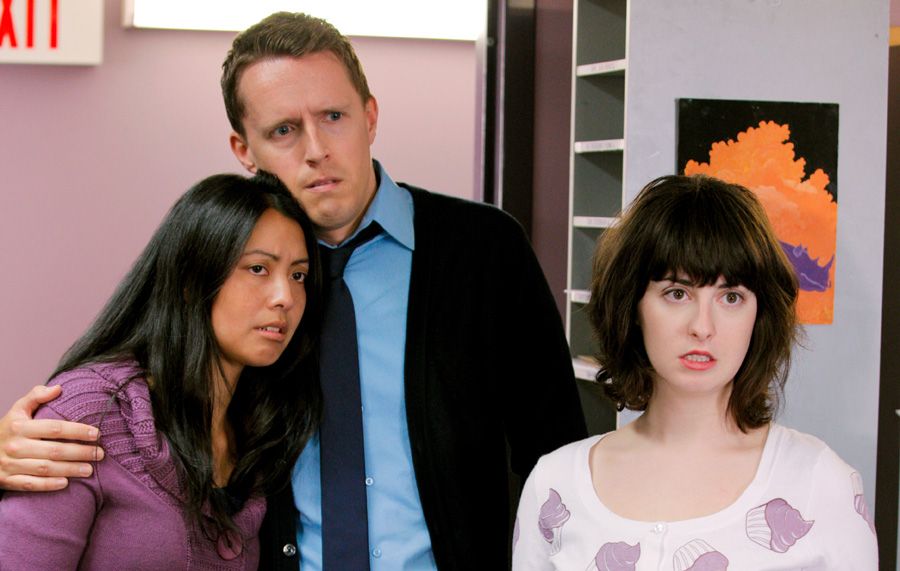Pardis Parker has three of the most challenging jobs in entertainment: He's a writer, a director and a stand-up comedian. Although challenging, Parker has found success as a writer/director of short films, which have received acclaim at numerous film festivals. Since his debut in 2008 with Afghan, Parker has gone on to direct many other projects, including two music videos and four short films.
Recently, Parker's award-winning 2011 silent film The Dance picked up some traction when The Office star Rainn Wilson linked it on Twitter. The Dance, in which Parker also stars, explores a 10-minute romantic comedy with a major twist: it's done entirely through mime. While not totally a silent film -- there's some excellent music that helps drive the story -- The Dance is a sweet and comedic look at an office romance.
Spinoff Online spoke with Parker about The Dance, his experience as a director and his thoughts on the short film format. Plus, he teases a project with Wilson and plans to transform his character from The Dance into a TV series reminiscent of Mr. Bean.
Spinoff Online: Pardis, The Dance is a great exploration of the modern silent film. What was the initial concept for the film, and how did it develop into the final product?
Pardis Parker: I've always loved making people laugh without saying anything, even when I'm on stage doing stand-up. It's such a fun challenge for me, to see how long I can go without having to speak, to see how long my eyes or cheeks or lips or eyebrows can escalate the laughs in the room. The film was a natural extension of that - I wanted to make people laugh, and to make people care about these characters, without saying a word.
How did working on and developing The Dance differ from your many other short films?
It was my first love story! And I love love stories. Whether it's sappy boy-meets-girl stuff like The Notebook or Dear John. Or unexpected father-son stuff like Blow or Dear John. Or even movies about quiet commitments to someone else, like The Village or Dear John. All of it. So tackling this genre that I love so much was a lot of fun. Dear John.
The Dance follows in the tradition of quite a few modern silent films. As a filmmaker and an actor, what appealed to you about the format?
The most appealing thing for me about a silent comedic love story is its universality -- the idea that I can tell a story that everyone in the world, regardless of their age or background or the language they speak, can watch together and enjoy in the exact same way. The fact that I can make a room of people laugh all at the same time, even if no one in the room speaks the same language, is such a delight.
One of the aspects of The Dance that impressed me the most was how well the music matched with the emotion and humor. I understand the music was composed especially for the film. How did you go about choosing composers that could capture the feel of what you were trying to accomplish?
I had the pleasure of working with the film's composers, Asif Illyas and Shehab Illyas, on a few projects beforehand -- a short film called Two Men, Two Cows, Two Guns, a music video, and some side projects -- so it was a no-brainer. They're terrifically talented musicians and wonderful collaborators. I was rushing out the door when Asif emailed me the first draft of the film's main song, so I had to listen to it on my iPod the first time through, and all I can remember is a comically large smile washing over my face as I made my way to the train station, and the curious stares I was getting as a result from the people walking past me. And then I just listened to the track over and over again. They knocked it out of the park on their first try.
Comedy is challenging even with words, but how challenging was it to boil down the emotion and humor of The Dance into just physicality?
Making people laugh without saying anything is something I've been trying to do my whole life, so it wasn't a huge departure for me. Now, directing myself, without the aid of video playback on set, and trusting that I got what I needed, especially when we were shooting on film and not digital -- that was tough.
You've had a long history with short film -- most recently, you wrote Jash Ugly Sweater Contest, which featured Sarah Silverman and Michael Cera. What appeals to you about short film as a writer, director and performer?
It feels like an extension of stand-up. You're telling one joke. One story. One life experience or lesson. It's a natural transition between the two forms. Sarah Silverman and Michael Cera, by the way, are so much fun to work with! It's no accident that they've been as successful as they've been -- they're super, super-good at what they do.
The character has a Mr. Bean-esque quality to him, and I understand you're getting interest from TV networks to anchor a Mr. Bean-ish series. What do you think draws people to that style of comedy, and why do you think it works so well in The Dance?
It's so universal! No one needs to translate what's going on. Everyone gets the joke immediately. And I think a big part of that is because working without dialogue forces clearer writing from the get-go. You're forced to set up a scenario that people can immediately understand. And the fact that we haven't had a dialogue-free comedy in the past 20 years, in spite of how wildly successful Mr. Bean was both here and overseas, blows my mind.
What other projects are on the horizon for you? Anything viewers should particularly be on the lookout for?
Right now I'm working on my first TV show, an animated series I wrote, and that I'm producing with Rainn Wilson and the good folks behind Futurama. And I'm also dipping my toes into the world of comic books by adapting a centuries-old fable into a one-off. Just trying to find comic book artists right now -- pencilers, inkers, letterers -- that have experience doing more painterly looking, beautiful work. It's been a really fun process.




